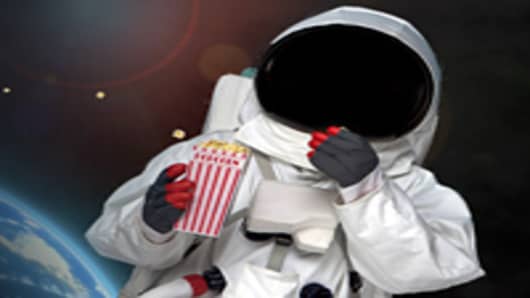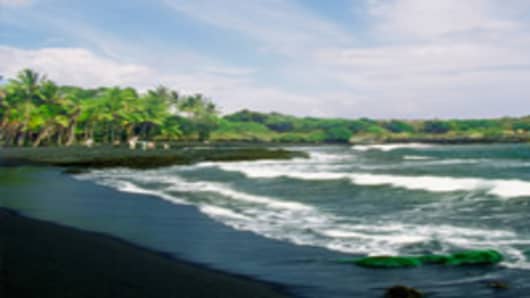Plenty of little kids have dreamed of becoming an astronaut. And plenty of adults have dreamed of jetting off to Hawaii. Now, Cornell and the University of Hawaii are making a double dream come true for eight lucky people, offering a job to work on an astronaut mission in Hawaii — and they will teach you how to cook ... on another planet.
Wait, cook? Don’t astronauts have their food delivered in little space pouches?
Yep, this mission is about cooking. But it’s about the great beyond of cooking — beyond those little silver pouches — testing crew-cooked food, which IS possible on a planetary-surface mission.
That’s right, while you would be cooking, you would be paving the way for a PLANETARY-SURFACE MISSION.
And just because there’s cooking involved doesn’t mean this is a job for chefs and not future astronauts.
Billed as a 120-day “Hawaii Space Exploration Analogue & Simulation (HI-SEAS),” this mission — oh yes, it IS a mission — will require of its participants the same qualities sought in astronauts. The long list of requirements includes a bachelor’s degree from an accredited institution in engineering, biological or physical sciences, mathematics or computer science, professional experience of at east three years, ability to pass a class 2 flight physical examination, no history of respiratory problems, ability to conduct field research and a strong interest in human space exploration. Oh, and of course, for this mission, add a “willingness and ability to eat a wide range of foods.”
And, while not required, it would be “desirable” to have a candidate with experience in a complex operational system (e.g., submarine, ambulance, airplane cockpit or control room) and, uh, “household cooking experience.”
The study goals include coming up with creative recipes but also estimating the use of crew time, power and water, and measuring crewmembers’ food intake and sense of taste and smell.
At this point, you may be wondering … are you sure they can’t just keep squeezing their food out of those little pouches and focus on the important astronaut business?
Actually, this is a CRITICAL mission because in the same way that you and I might get tired of eating the same thing, so might astronauts — especially when it’s astronaut food. That could cause their overall food intake to decline, “putting them at risk for nutritional deficiency, loss of bone and muscle mass and reduced physical capabilities.”
So you might say, this mission is about saving astronauts’ lives and making them the strongest, best astronauts they can be.
Imagine the lifelong bragging rights that come with that!
Before you go packing the sunscreen, you should probably know that the first stop on your mission won’t be Hawaii, it will be, uh, Ithaca, N.Y.
And, while that sounds like the middle of nowhere, Ithaca is a very cool place — it has one of the highest Ph.D. ratios per capita in the country, it has its own currency (Ithaca hours), it’s home to Cornell University, Ithaca CollegeAND the Rutabaga Curling World Championship. Oh, and you can learn how to walk on firehere.
Eight finalists will be selected and flown to Ithaca. There, they will go through a four-day workshop at Cornell to learn how to perform tests of “smelling acuity and nasal patency”; procedures for tracking food intake; how to cook with shelf-stable ingredients; and discuss and select research projects for the mission. Based on that four-day mission, the team will be divided into six core members for the mission and two alternates.
The six will blast off to Hawaii for their final 120-day mission, where they will get to work in a “Mars analogue habitat,” “wear simulated space suits” and conduct tests.
All expenses will be paid — except, um, medical care and insurance, which participants will have to pay for themselves. At the end of the mission, each participant will receive a $5,000 bonus.
That doesn’t seem like a lot, considering you have to work in isolation away from your family, but the real payoff is lifelong bragging rights that you once went on a space mission and helped save astronaut lives.
Applications are due Feb. 29 at 11:59pm Hawaii time. To apply, visit http://manoa.hawaii.edu/hi-seas/.
To the astronaut refrigerator … and beyond!
More From CNBC.com: Email us at ponyblog@cnbc.com or drop a line in the comment box below.
More from The Pony Blog: ponyblog.cnbc.com




